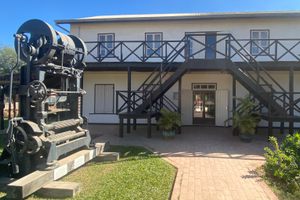On the dusty Main Street of a small ranching town, in the middle of Paraguay’s endless Chaco territory, a collection of one-room museums tells one of the often overlooked stories of an already overlooked country: the story of Paraguay’s Mennonites.
Many arrived in the 1920s and 30s after fleeing the anti-religious legislation of the newly formed USSR, the refugees found a hot, dry landscape full of swamps and strange creatures. Many had recently fled through Siberian winters to China and still carried their thick winter coats and hats. They were adaptable, however—their ancestors had already fled Germany to Russia in the years of Catherine the Great.
Soon they had built three collectives: Neuland, Menno and Fernheim (of which Filadelfia is the largest town). Over the years they expanded from farming and ranching to various types of industry, though agriculture remained the lifeblood of the community.
Today, German-speaking Mennonites only make up about a quarter of Filadelfia’s population, but their history and culture has left its mark, from the wide, grid-like streets, to the Mennonite dishes served in the Hotel Florida across the street from the museum.
